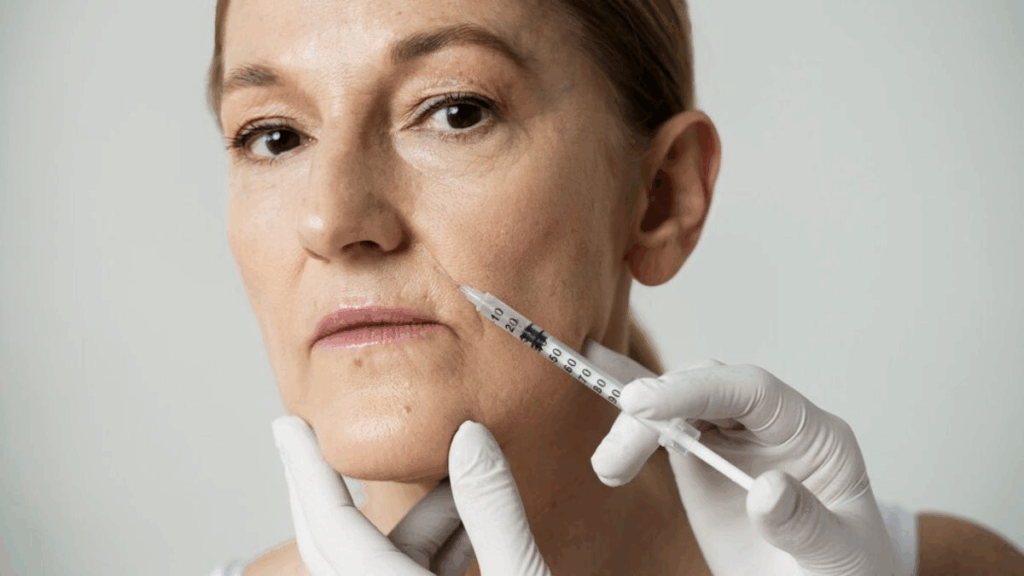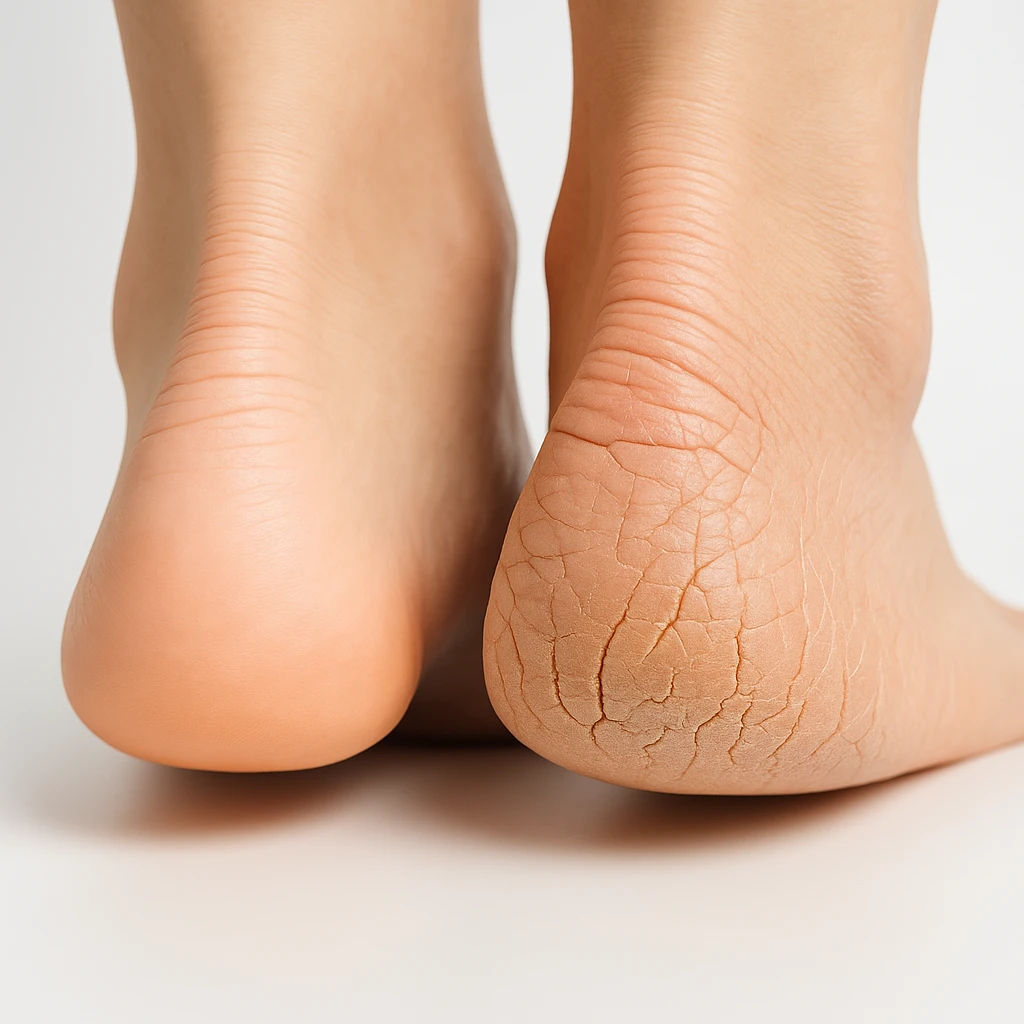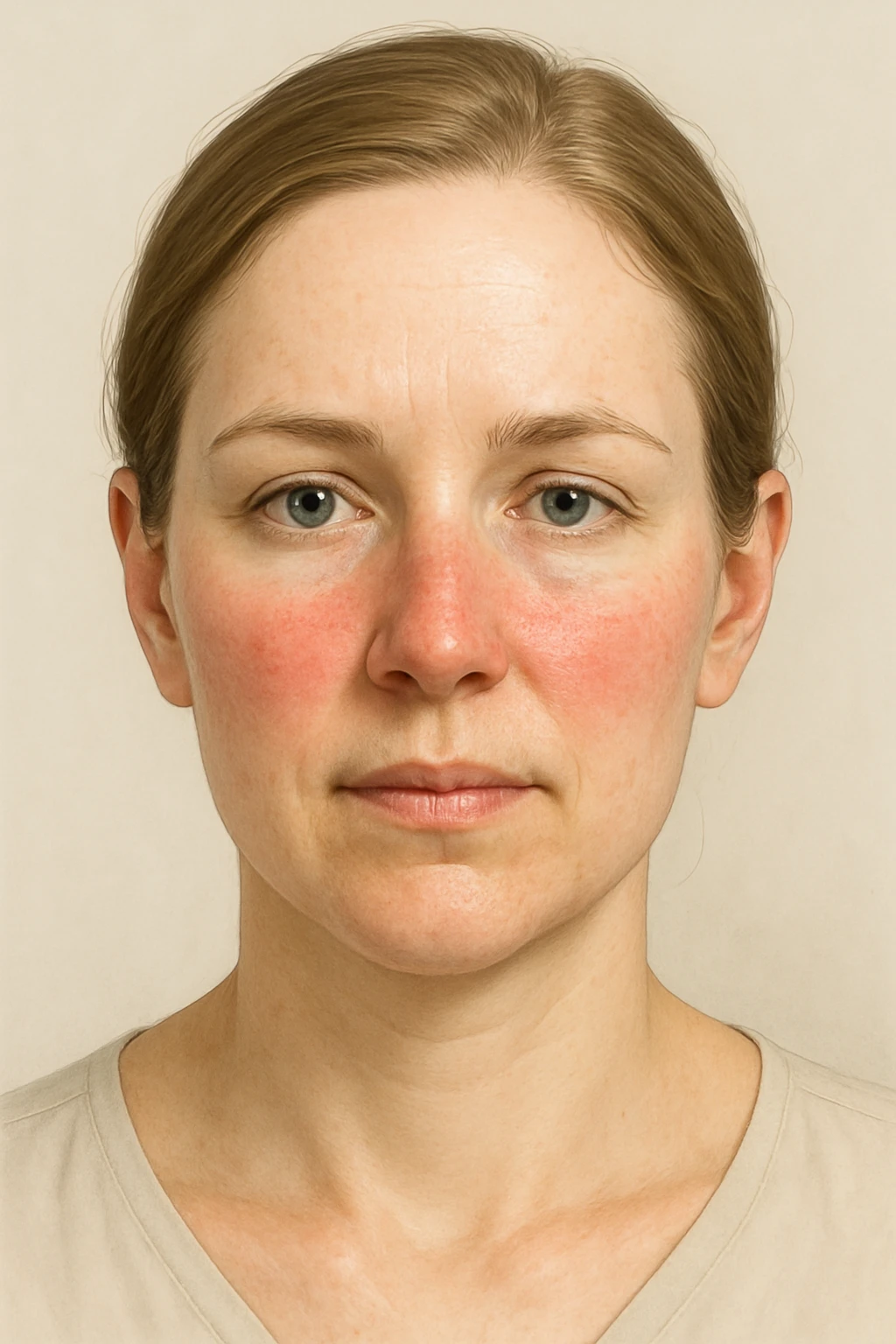Does Botox Cause Cancer? A Complete Medical Review of Risks and Evidence
- Introduction: Addressing Fears Around Botox and Cancer
- What Is Botox and How Does It Work?
- Common Misconceptions Linking Botox to Cancer
- What Does Current Research Say About Botox and Cancer?
- How Botox Interacts with the Immune System
- Understanding the Dose and Frequency of Botox Use
- Comparing Botox to Other Cosmetic or Medical Substances
- Misreported Cases and Media Hysteria
- Long-Term Botox Use: What We Know So Far
- Can Botox Interact With Other Cancer Treatments?
- Botox and Cancer Research: Emerging Perspectives
- Is Botox a Cancer Risk?
- Guidelines for Safe Botox Administration
- Botox Alternatives: Are They Safer?
- Public Perception and Medical Communication
- Final Thoughts: Trusting Science, Not Fear
- FAQ: Does Botox Cause Cancer?

Introduction: Addressing Fears Around Botox and Cancer
Botox, short for botulinum toxin type A, has become one of the most popular non-surgical cosmetic treatments in the world. Millions of people use it to reduce wrinkles, manage migraines, control excessive sweating, and treat muscular disorders. However, with increasing long-term use, questions continue to arise about its safety—especially whether Botox could potentially cause cancer.
These concerns are understandable. Botox is derived from one of the most potent neurotoxins known to science. Even in small doses, it modifies neuromuscular activity, which naturally raises questions about how it might influence cell behavior, immune response, or tissue health over time. This article explores current evidence, research, and expert opinions to help you understand whether Botox has any real association with cancer development.
What Is Botox and How Does It Work?
Mechanism of Action
Botox is a purified neurotoxin produced by the bacterium Clostridium botulinum. It works by temporarily blocking the release of acetylcholine, a neurotransmitter that tells muscles to contract. When injected into specific muscles, Botox causes controlled paralysis that reduces movement and relaxes the targeted area. This effect can smooth out wrinkles, reduce spasms, or block overactive glands.
Because Botox works at the neuromuscular junction, it does not alter DNA, stimulate cell division, or interact with the nucleus of cells—the mechanisms typically associated with cancer development. Its action is localized, temporary, and carefully dosed to avoid systemic spread.
Medical and Cosmetic Applications
While most people associate Botox with wrinkle reduction, its FDA-approved medical uses include treatment for chronic migraines, cervical dystonia, overactive bladder, and hyperhidrosis. It’s also used off-label for facial asymmetry, depression, and even certain types of pelvic floor dysfunction. Botox has an excellent safety profile when administered by trained professionals, but because it is a neuroactive agent, concerns about long-term exposure are natural.

Common Misconceptions Linking Botox to Cancer
Origin of the Rumor
Fears about Botox and cancer likely stem from two sources: its bacterial origin and its use in cosmetology. Because Botox is derived from a toxin responsible for botulism, it seems dangerous by association. However, in medical and cosmetic use, Botox is purified, stabilized, and injected in minuscule, targeted doses that bear no resemblance to systemic botulism.
Some believe that paralyzing facial muscles could somehow “trap toxins” or prevent proper lymphatic drainage, leading to cancer. This theory is not supported by any biological or clinical evidence. The body continues its natural detoxification and immune surveillance processes even in treated areas. “Is bowel leakage a sign of cancer” is an example of a symptom that causes excessive anxiety without any connection to oncology.
Misunderstood Side Effects
Occasionally, people who develop lumps, redness, or nodules at injection sites fear that these are precancerous changes. In reality, these reactions are typically due to local irritation, allergic response, or immune sensitivity—not uncontrolled cell growth. Cancer involves DNA-level mutations and unregulated proliferation, which Botox does not cause.
What Does Current Research Say About Botox and Cancer?
Clinical Trial Data and Long-Term Studies
Botox has been studied extensively in both cosmetic and medical settings, with some patients receiving injections every few months for over 10–15 years. Across thousands of patients and numerous trials, there has been no statistically significant increase in cancer incidence related to Botox use. These findings have been consistent across age groups, genders, and treatment sites.
In fact, long-term users of Botox—such as patients with neurological disorders requiring high-dose treatments—have not shown increased rates of tumors in either local tissues or systemic organs. Adverse events in these populations are usually limited to muscle weakness or injection-site discomfort, not malignancy.
Evaluating Laboratory Evidence
Preclinical studies in cell cultures and animals also support Botox’s safety. No studies have shown that botulinum toxin causes cell mutations, chromosomal instability, or carcinogenesis. In fact, some animal studies have explored Botox’s potential anti-tumor properties due to its ability to reduce local inflammation or alter blood flow in specific tissues.
To date, no mechanistic pathway has been identified that links Botox to cancer initiation or progression. Its effects are neurochemical—not genetic or oncogenic.

How Botox Interacts with the Immune System
Immunogenicity and Antibody Development
One area of investigation around long-term Botox use is its interaction with the immune system. In rare cases, repeated injections can lead to the development of neutralizing antibodies. These antibodies reduce the efficacy of Botox but do not indicate immune system overactivation or cancer risk. Importantly, there is no evidence suggesting that these antibodies trigger malignancy, autoimmune disorders, or lymphoproliferative conditions.
These immunologic reactions are usually dose-dependent and more likely in patients receiving high-volume therapeutic injections for medical conditions like dystonia or spasticity. Still, even in these populations, no cancer linkage has been established.
Inflammation vs. Cancer Risk
Mild, localized inflammation after a Botox injection is normal and generally subsides within hours or days. Chronic inflammation, on the other hand, is a known risk factor for some cancers. However, Botox does not induce the kind of prolonged inflammatory state associated with tumorigenesis. It is not metabolized into carcinogenic byproducts, nor does it accumulate in tissue. This sets it apart from certain environmental toxins or chronic irritants known to promote cancer through persistent inflammation.

Understanding the Dose and Frequency of Botox Use
Therapeutic vs. Cosmetic Exposure Levels
In cosmetic applications, Botox doses are relatively small—often in the range of 20 to 50 units per session. In medical contexts, such as for muscle spasticity, doses can exceed 300 units. Even at these higher levels, studies have not shown any increased cancer risk. Dose response curves in toxicology suggest that Botox’s effects are local and taper off as the neurotoxin is cleared, rather than accumulating or exerting long-term damage.
Repeat injections are usually spaced several months apart, giving the body ample time to metabolize and eliminate the toxin. There is no evidence that cumulative exposure, even over a decade or more, contributes to carcinogenesis.
Safety Margins and Regulatory Oversight
The FDA and global health agencies have evaluated Botox’s long-term safety profile extensively. Manufacturers are required to conduct post-marketing surveillance and submit adverse event data. Across millions of doses, no significant cancer signal has emerged from these databases. The approved safety margins for Botox remain wide, and regulatory agencies have not issued cancer-related warnings or required label updates based on oncology concerns.
Comparing Botox to Other Cosmetic or Medical Substances
Known Risks of Other Injectables
To better contextualize Botox’s safety, it helps to compare it to other commonly injected or applied compounds. Some cosmetic fillers, such as certain types of silicone or polyacrylamide gels, have been associated with granuloma formation or inflammatory reactions, though not with cancer per se. Steroid injections, when overused, may cause tissue atrophy but do not increase cancer risk.
In contrast, some older hair dyes, talcum powders, or industrial chemicals have been definitively linked to cancer due to their interaction with DNA, endocrine disruption, or chronic irritation. Botox does not fall into any of these categories in terms of mechanism or observed effects.
| Substance | Common Use | Carcinogenic Potential | Mechanism |
| Botox (onabotulinumtoxinA) | Wrinkle reduction, migraines | No | Neurotransmitter inhibition |
| Silicone fillers | Volume restoration | No | Inert; may cause granulomas |
| Talcum powder (perineal) | Personal hygiene | Possible (ovarian) | Chronic inflammation |
| Formaldehyde | Industrial preservative | Yes | DNA alkylation |
| Tobacco smoke | Recreation | Yes | Direct DNA damage |
Misreported Cases and Media Hysteria
Evaluating Anecdotal Claims
From time to time, isolated reports circulate in the media claiming that someone “got cancer after Botox.” These stories are rarely backed by clinical data or causality studies. Anecdotes without scientific investigation cannot establish risk. Correlation does not imply causation—particularly in older adults who may develop cancer simply as a function of age or other exposures.
Many such stories fail to mention underlying risk factors like family history, environmental toxins, or unrelated genetic predispositions. Responsible health journalism and medical evaluation are essential before drawing such conclusions. “Colon cancer metastisized stomach wall” is an example where symptoms and diagnosis can easily be confused without accurate medical analysis.
Social Media and Misinformation
Social media platforms amplify fear faster than facts. Posts that allege serious health risks—especially involving appearance or beauty treatments—tend to go viral. However, much of the content lacks peer-reviewed backing, and visual “before and after” claims rarely correlate with validated medical records. Distinguishing real evidence from panic-driven speculation is critical in making informed decisions.
Long-Term Botox Use: What We Know So Far
Duration of Use in Real-World Patients
Some patients have received Botox regularly for over 15 years, particularly those being treated for neurological conditions like dystonia or spasticity. These individuals serve as valuable long-term case studies for assessing health risks. Data from longitudinal follow-ups and observational registries have not revealed elevated rates of malignancy in these users compared to the general population.
Even in cosmetic settings, many individuals begin Botox in their 30s or 40s and continue treatments well into older age. Across this demographic, no pattern of site-specific tumors or systemic cancer trends has been observed. The lack of signal in such a broad user base strongly supports the compound’s oncologic safety.
Patterns in Surveillance Data
The FDA Adverse Event Reporting System (FAERS) and similar international databases track complications, side effects, and health patterns in Botox users. After decades of reporting, cancer is not a commonly flagged event. This real-world pharmacovigilance adds additional confidence that Botox, when used appropriately, does not appear to promote or accelerate oncologic conditions.
Can Botox Interact With Other Cancer Treatments?
Use in Cancer Survivors
Many cancer survivors use Botox for medical reasons, such as managing radiation-induced muscle spasms or post-treatment migraines. Botox is considered safe for these individuals, as it does not interfere with chemotherapy, radiation, or immunotherapy agents. Oncologists often approve its use post-treatment to improve quality of life.
It’s worth noting that Botox is metabolized locally and does not circulate widely in the body. This property makes it unlikely to interact with systemic therapies or suppress immune function. For patients in remission or living with chronic cancers, Botox has not been shown to impact recurrence risk or survival outcomes.
Special Considerations
As with any medical decision, individual health status, cancer type, and current medications should be discussed with the treating physician. In patients with blood cancers or compromised immunity, extra precautions may be taken to reduce infection risk from injections, but this is standard with any procedure—not specific to Botox. “When to euthanize a dog with cancer” is an example where not only the diagnosis but also the quality of life is important when making decisions.
Botox and Cancer Research: Emerging Perspectives
Experimental Uses of Botulinum Toxin in Oncology
Interestingly, researchers are now exploring botulinum toxin not as a cancer risk—but as a possible treatment adjunct. Some studies suggest that Botox may inhibit tumor growth by affecting local nerve signaling in cancers like prostate and stomach tumors. While these studies are still in early stages, they challenge the outdated notion of Botox as a potential carcinogen.
In one line of research, scientists are investigating how Botox might slow down angiogenesis—the formation of new blood vessels that tumors need to grow. Others are exploring whether it can be injected into tumors to reduce local pain or inflammation. These findings are still experimental, but they reinforce the idea that Botox has no intrinsic cancer-causing mechanism.
Scientific Consensus
Across multiple disciplines—neurology, dermatology, oncology, and pharmacology—there is no scientific support for the claim that Botox causes cancer. Instead, new studies continue to reaffirm its safety and expand its therapeutic potential. Ongoing trials and post-marketing studies will continue to monitor outcomes, but current evidence overwhelmingly supports its use as non-oncogenic.
Is Botox a Cancer Risk?
Weighing the Evidence
To date, there is no clinical, laboratory, or population-level evidence linking Botox to cancer. Its biological mechanism does not involve DNA, cell division, or genetic mutation. Instead, it acts locally at the neuromuscular junction and is metabolized without systemic accumulation. Millions of patients use Botox safely every year, both medically and cosmetically.
While no treatment is entirely risk-free, cancer is not among the established concerns of Botox. Allergic reactions, injection-site effects, and rare immune responses are known side effects—but not carcinogenesis. For those considering or continuing Botox use, the data should offer strong reassurance.
Guidelines for Safe Botox Administration
Professional Standards and Best Practices
The key to ensuring Botox remains safe lies in proper administration. Botox should only be injected by qualified professionals—dermatologists, plastic surgeons, neurologists, or specially trained medical providers. The dose, injection technique, and anatomical target must be carefully selected to avoid complications.
Clinicians follow strict aseptic protocols, use FDA-approved formulations, and base their injection strategies on peer-reviewed guidelines. Patients are also evaluated for contraindications such as neuromuscular disorders, infections at the injection site, or hypersensitivity reactions. When all precautions are taken, the risk of serious complications—including any theoretical cancer risk—is minimized to near zero.
Red Flags for Unsafe Practices
Problems arise when Botox is administered by unlicensed individuals, or when counterfeit products are used. These versions may contain impure ingredients, improper concentrations, or bacterial contaminants. In rare cases, such counterfeit substances have led to systemic toxicity or immune complications—but again, not cancer. Patients should always verify their provider’s credentials and ensure the product is sourced from legitimate medical suppliers.
Botox Alternatives: Are They Safer?
Other Cosmetic Toxins and Peptides
As Botox use has grown, alternative treatments have emerged, including Dysport, Xeomin, and Jeuveau. These products contain similar forms of botulinum toxin and work through the same mechanisms. Studies show they share comparable safety profiles and no association with cancer.
Some newer peptides and topical agents claim to reduce wrinkles without toxins, but their long-term safety and efficacy are less studied. Natural alternatives—like facial massage, microcurrent therapy, or retinoids—may offer modest results but lack the muscle-relaxing power of neurotoxins.
Risk-Benefit Evaluation
Ultimately, the choice between Botox and its alternatives should be based on patient goals, medical history, and clinical guidance—not cancer fears. None of the mainstream, FDA-approved injectables have been linked to carcinogenesis. Safety comparisons between them center more around onset, duration, and spread—not oncologic risk.
Public Perception and Medical Communication
Educating Patients With Evidence
Misinformation thrives in the absence of clarity. Patients who fear cancer from Botox often base their concerns on anecdotes, online rumors, or fear of “toxins.” It’s essential that clinicians explain how Botox works, what risks are scientifically supported, and what myths persist without evidence.
Communication should be empathetic but firm: the word “toxin” does not equate to carcinogen. Many medications, including antibiotics and anesthetics, are derived from biologically active compounds. Botox, in its clinical form, is one of the most thoroughly studied and consistently safe biologics used in medicine.
Addressing Anxiety and Consent
When patients hesitate, clinicians should welcome questions, offer literature, and discuss risk in relatable terms. An informed patient is more likely to make rational decisions and less likely to be swayed by viral misinformation. Providing statistics, explaining mechanisms, and pointing to research can dispel fear and build trust. “Is bowel leakage a sign of cancer” – as an example of when fears without confirmation generate unnecessary anxiety.
Final Thoughts: Trusting Science, Not Fear
Science-Based Confidence
After examining decades of research, clinical trials, pharmacovigilance reports, and case studies, the conclusion is clear: Botox does not cause cancer. Its mechanisms do not promote mutations or unregulated cell growth, and millions of patients have used it without any documented oncologic complications.
If concerns persist, patients should consult licensed medical professionals who can guide them with real data—not online speculation. As long as Botox is administered properly, it remains one of the safest and most effective tools in both cosmetic and therapeutic medicine.
FAQ: Does Botox Cause Cancer?
Can Botox injections cause cancer in the skin or face?
No, Botox does not interact with DNA or stimulate abnormal cell growth. It acts at the nerve-muscle junction and is metabolized without accumulating in tissues.
Has anyone ever gotten cancer from Botox?
There are no confirmed cases where Botox was identified as the cause of any cancer. Reports that link the two are anecdotal and not supported by clinical data.
Is Botox safe for long-term use?
Yes. Patients have used Botox for over a decade for both cosmetic and medical reasons, with no evidence of increased cancer risk.
Can Botox interfere with cancer treatments?
Generally, no. Botox does not conflict with chemotherapy, radiation, or immunotherapy and may even be used to help cancer survivors manage symptoms.
Are fake or counterfeit Botox products dangerous?
Yes. Counterfeit products may contain harmful ingredients and pose a real health risk. Always confirm your provider uses FDA-approved Botox.
Could Botox trigger breast cancer or hormone-sensitive cancers?
There is no evidence linking Botox to hormone regulation or endocrine disruption, making this connection highly unlikely.
Is there any research showing Botox helps with cancer?
Yes. Some preliminary studies are exploring Botox as a possible adjunct in cancer treatment, particularly in pain relief and anti-angiogenesis.
Should I worry about getting Botox in my 30s or 40s?
No. Age is not a risk factor for Botox-related cancer, and preventative or aesthetic use in younger adults remains safe.
Does repeated Botox use build up in the body?
No. Botox is broken down by the body over time and does not accumulate, which is one reason it’s considered safe even with regular injections.
Can Botox be used in cancer survivors?
Yes. It is often used to treat post-treatment symptoms like facial paralysis or chronic migraines in patients who are in remission.
Why do some people say Botox is toxic?
Because it’s derived from a neurotoxin. However, in its medical form, Botox is highly purified and administered in safe, controlled doses.
What about cancer near the injection site?
No credible studies have found an increased risk of tumors near Botox injection sites.
Can Botox weaken the immune system and make cancer more likely?
No. Botox does not suppress the immune system. In rare cases, it may trigger neutralizing antibodies, but these are not linked to cancer.
Is Botox safer than other wrinkle treatments?
Botox is one of the most studied cosmetic treatments and has a long safety record. Other treatments may vary in risk depending on their composition.
What should I ask my doctor before getting Botox?
Ask about credentials, product sourcing, your medical history, and any specific concerns. A reputable provider will explain risks and safety clearly.













